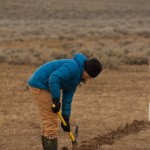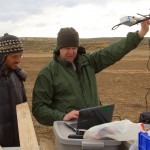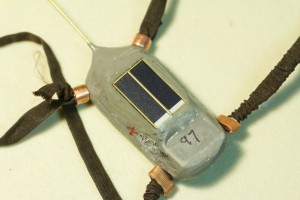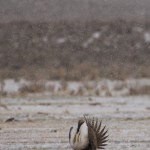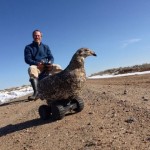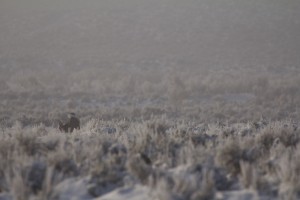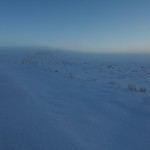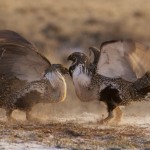 March has almost literally blown by out here in Windy Wyoming. It’s been a pretty good month so far, in spite of some cycles of mild snowfall and mud that have made our field work difficult at times.
March has almost literally blown by out here in Windy Wyoming. It’s been a pretty good month so far, in spite of some cycles of mild snowfall and mud that have made our field work difficult at times.
The breeding season started in earnest with a Cottontail Lek copulation on March 19th. This was tied for our earliest one on record. My impression is that the peak in breeding is fairly spread out this year, with female attendance and numbers of copulations not necessarily following the quick increase and decrease that marks some years. Maybe bad weather early in the season tends to synchronize the females more as the earliest hens delay breeding, but the lack of severe early storms or deep snow cover has spread things out this year? Just speculation.
Although it’s early in the season (and these data are only field observations and still pending new events collected from our video records), reproduction seems particularly skewed this year. The top guy on Cottontail seems especially strong. I’ll have a quick post about him soon. He’s now got our single-day record for copulations, and really dominates the lek in ways we’ve not seen in the past.
Study-wise, we’ve got pretty much everything going now. Microphone arrays have been deployed at our two leks (Cottontail and Chugwater), and we’ve collected two mornings of recordings on each lek. We’re getting used to the new cameras as well. There are good points and bad points (mostly good points I’d say). It’s really nice to be able to view the videos so quickly, and in our initial data collection from the tapes we realized you could even zoom in on certain areas of the screen! That is a pretty nice feature.
We did not put in a microphone array at Monument Lek, nor have we been monitoring it on a daily basis. Bird numbers there are about what they were last year, so we’re not going to invest as much in it since the males seem to have shifted their territories to places we can’t easily observe them. Sad to take a break from this lek- but hopefully it will rebound next year and we will be able to record behaviors and conduct experiment there again in the future.
Speaking of experiments, we actually got a complete set of early season fembot experiments in. More about this in a future post.
Our collaborator John Burt just left. John has been building the advanced telemetry tags we are deploying this year. We got a couple on last spring– these new ones have solar to help deal with the power needed to run both a GPS chip and an on-board accelerometer. We’ve got 13 tags in hand, and are looking forward to collecting data on where these males are getting their meals (and how that impacts their ability to put on a good show). We’ve already caught a dozen males, so hopefully it won’t take long to catch a few more and get all of these devices out on birds and collecting data.
We also enjoyed having Yale student Sam visit the camp for a few days. Sam is interested in the relationship between female preferences and male aggression, and thinks the sage-grouse might be an interesting system to look at this issue.

